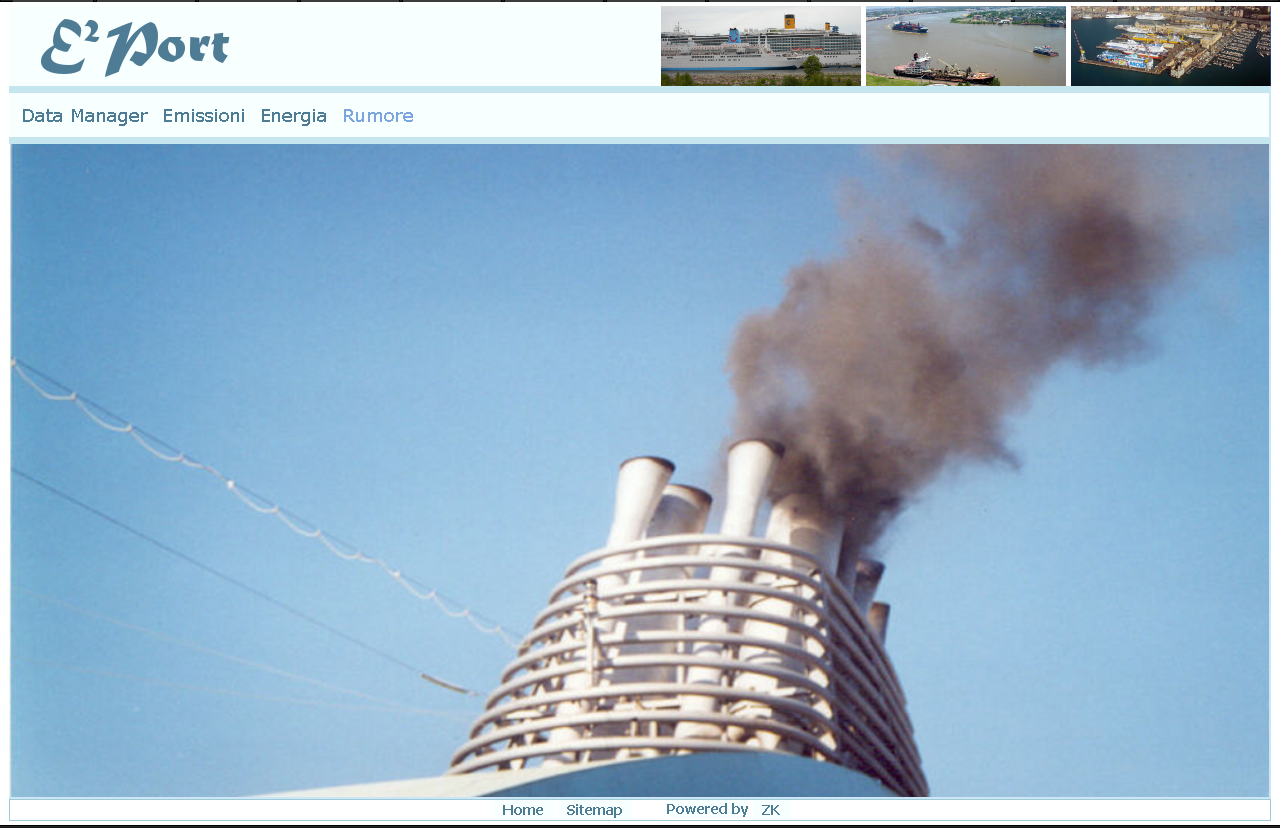E2Port - Model for the evaluation of energy consumptions and emissions from shipping
 E2Port is a comprehensive model to assess consumption and environmental impacts of ship activities in port and at sea. In particular are evaluated: E2Port is a comprehensive model to assess consumption and environmental impacts of ship activities in port and at sea. In particular are evaluated:• Emissions of air pollutants in ports • Fuel consumption and emissions of carbon dioxide in ports • Emissions of air pollutants at sea from port to port • Noise in port environment • Emissions of air pollutants from ground support equipments • Fuel consumption and emissions of carbon dioxide from ground support equipments • Emissions to air and water from other port activities (dust from materials handling, fuel handling, ship repair) At present the features have been developed in relation to energy consumption, air pollutants and greenhouse gases emissions in port and at sea. In this context, the model incorporates the previous AirShips model dedicated to emissions of air pollutants.
E2Port evaluates the energy consumption and air pollutants (sulfur oxides, nitrogen oxides, volatile organic compounds excluding methane, carbon monoxide, particulate matter with diameter less than 10 microns and 2.5 microns, heavy metals) and carbon dioxide emissions produced by the movement and berth of ships in port and at sea. E2Port was originally developed by TECHNE Consulting based on the methodology developed under the project MEET and recently updated in collaboration with Task Force on Emission Inventories and Projections of the Convention on Long - Range Transboundary Air Pollution. E2Port evaluates the estimated energy consumption and emissions on a single port or shipping line or area. E2Port splits the maritime activity among the following phases: (a) approach and docking ports, (b) berth in port, (c) departure from port and (d) navigation. In particular, the phase (a) starts when the ship begins to decelerate and ends when moored, while the phase (c) begins when the ship free from its moorings and ends when it has reached cruising speed. Fuel consumptions and emissions at the wharf continue even at the ship's arrival in the port (in berth). Indeed energy must be produced for auxiliary services (lighting, heating or air conditioning, pumps, refrigeration, etc.). To satisfy this demand for energy one or more steam boilers, operating in reduced power and consequently consumption, are usually used. However, some steam ships using diesel engines for auxiliary power supply ancillary services. In terms of fuel consumption and emissions can be identified two phases of operation (AEC), a stationary phase (b) and a cruise phase (d). To estimate fuel consumption and emissions in detail, it must be included in E2Port the number of days and hours spent in different stages of navigation for each class of ship fitted with different engines and using different fuels. |
